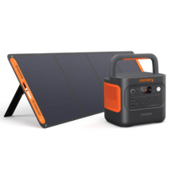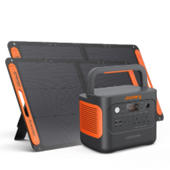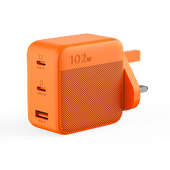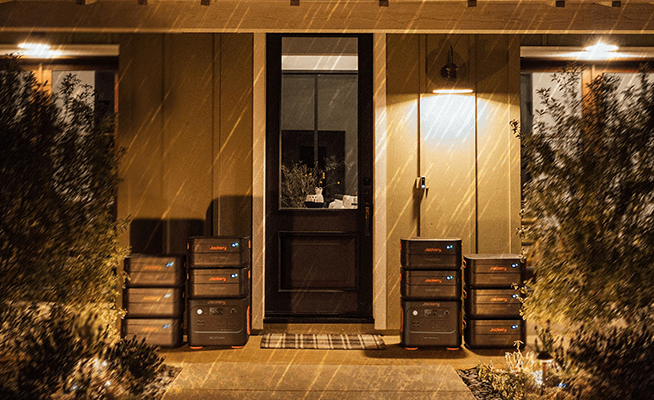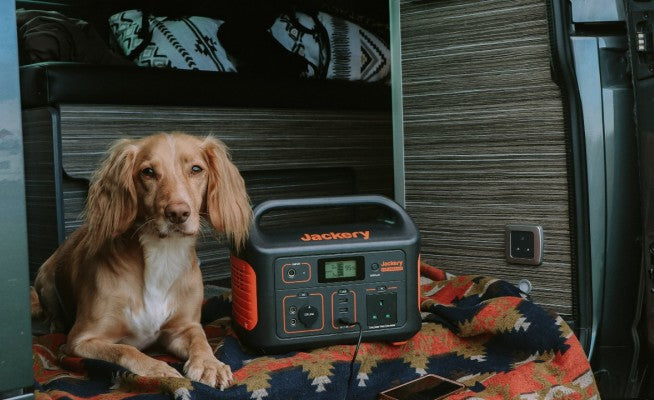When checking your energy bill or comparing energy prices, you must know how much energy you use. Your gas meter may show your usage in cubic feet (ft³) or cubic meters (m³), but most people may not know what ft³ or m³ means.
It is simple, converting gas units to kWh makes it more intuitive for most people to understand energy consumption. However, a new question arises: how do you convert gas units to kWh? This blog will focus on converting gas units to kWh and help people master the specific conversion method.
|
Key Takeaways: |
|
Why Convert Gas Units to kWh?
Converting gas units to kWh mainly unifies energy measurement standards and facilitates comparing and calculating energy consumption and costs. Especially for ordinary people, converting gas units to kWh has multiple essential benefits, including understanding and optimising energy use. The following will analyse several significant reasons for converting gas units to kWh:
Unify Energy Measurement Standards
Different energy sources, such as electricity, gas, and fuel oil, are usually measured in other units. Gas is measured in cubic meters or cubic feet, while electricity is measured in kilowatt-hours. The kilowatt-hour is an internationally accepted energy measurement unit, which facilitates data exchange and understanding. For example, in international energy trade, such as natural gas imports, using the internationally accepted kWh unit can avoid errors or disputes caused by unit conversion.
Accurately Calculate Energy Costs
Energy suppliers often charge in kilowatt-hours. After converting to kWh, all energy consumption can be compared under the same standard. Converting gas units to kWh can help directly calculate costs against the bill unit price to avoid confusion. For example, after converting the gas consumption of a gas boiler to kilowatt-hours, its efficiency, operating costs, and comparison with other appliances can be accurately evaluated.
Easy for Consumers to Understand
Compared with other energy consumption measurement units, ordinary users are more familiar with the kWh unit, which is the same as the electricity bill. After converting gas units to kWh, consumers can more intuitively compare the cost of gas and electricity and evaluate household energy expenditures. This not only helps consumers reduce barriers to understanding but also helps them optimise energy use and promote energy conservation awareness.
Meet Regulatory and Certification Requirements
The British government and energy regulators, such as Ofgem, require suppliers to submit energy consumption reports in kWh. In addition, greenhouse gas emission accounting also involves converting various energy consumption into a unified kWh unit. For them, converting gas units to kWh can standardise data formats, simplify regulatory processes, and promote the industry's transition to low-carbon.
What Data Does Convert Gas Units to kWh Involve?
Converting gas units to kWh is a common requirement in energy metering and billing. UK gas billing often measures energy consumption in kWh, but domestic gas meters usually display volume units (ft³ or m³).
The key to conversion is to relate volume units to energy units. But before you can do so, you need to know a few key pieces of information. Converting gas units to kWh requires carefully combining gas usage, calorific value, volume correction factor and conversion factor to get the correct data.

Gas Usage
The actual gas usage recorded by a gas meter is usually expressed in volume units, including cubic feet (ft³) or cubic meters (m³). If you want to get a period of gas usage, you can do so by reading the number on the gas meter. Subtract the last reading from the current reading on the gas meter to get the value.
Calorific Value
A gas's calorific value (CV) indicates the energy that can be released when a unit volume of gas (under standard conditions) is completely burned. The higher the CV, the more energy each gas unit contains.
To ensure accuracy, the calorific value is constantly tested at various points on the National Grid gas network, and this data is sent to the appropriate gas supplier. The calorific value of natural gas commonly used in the UK is approximately 37.5 to 43.0 megajoules per cubic metre (MJ/m³), but this value may vary depending on the gas's composition. The calorific value data can be obtained from the brochure provided by the energy supplier or on the energy bill.
Volume Correction Factor
Since gas expands and contracts with changes in temperature and pressure, a volume correction factor is introduced into the calculation to correct for the gas's volume. Your gas network operator calculates this factor based on your area's average temperature and pressure. It is usually close to 1.0 but can vary slightly depending on the season and geographical location.
Kilowatt-hour Conversion Factor
The kilowatt-hour is a standard unit of electrical energy and is converted to a uniform energy unit for gas energy. The kilowatt-hour conversion factor is a fixed constant that converts energy units from megajoules to kilowatt-hours. After conversion, 1kWh is equal to 3.6MJ. Therefore, you need to divide by 3.6 to convert megajoules to kilowatt-hours. If you are converting kilowatt-hours to megajoules, you need to multiply by 3.6.
How Do You Convert Gas Units to kWh?
Before you convert gas units to kWh, you need to check whether your gas meter is metric or imperial. Depending on the type of gas meter, you will need to perform different calculations.
How Do You Convert Gas Units to kWh: Metric Gas Meter?
If your gas meter was installed after 1995, it is a newer metric gas meter that measures gas in cubic meters (m³). It will usually have "cubic meters" or "m3" printed on the display. Converting a metric gas meter reading to kilowatt-hours requires knowing the calorific value of the gas, which is done by converting energy units. Here are the specific steps to convert cubic meters (m³) to kilowatt-hours (kWh):
Step 1: Get a Metric Gas Meter Reading
Locate your gas meter, usually outside the house, in the kitchen or a cupboard. When reading, ignore any red numerals or numbers in red boxes and instead write the complete number in black or white boxes.

(Data Source: Selectra)
You can calculate the amount of gas used in cubic meters (m³) by subtracting the last reading (or the meter reading on your previous bill) from the new reading.
Gas Used (m³) = Current Reading (m³) - Last Reading (m³)
Example 1: If a household in northern England last read 1000 m³ on its gas meter (metric meter) and the current reading is 1100 m³, then the gas consumption for this period is 100 m³ (1100 m³ - 1000 m³ = 100 m³).
Step 2: Determine the Calorific Value, Volume Correction Factor, and kWh Conversion Factor
The most reliable source for calorific values is to check your gas bill. You can use 40.0 as the default calorific value if you don't have the exact number.
You usually don't need to look it up; your gas supplier will automatically apply the appropriate volume correction factor when calculating your bill. If you calculate it manually, use 1.02264 in the formula.
To convert megajoules to kilowatt-hours, you must divide by 3.6, because 1 kWh equals 3.6 MJ.
Step 3: Plug Relevant Data into the Applicable Conversion Formula
Once you have all the relevant useful data, you must plug it into the conversion formula. The formula for converting cubic meters (m³) to kilowatt-hours (kWh) is as follows:
Gas consumption (kWh) = Gas consumption (m³) × calorific value × volume correction factor ÷ kWh conversion factor
Example 2: Based on Example 1, this household's gas consumption is 100 m³, approximately 1136kWh (100m³ × 40.0 × 1.02264÷3.6 ≈ 1136kWh).
How Do You Convert Gas Units to kWh: Imperial Gas Meter?
While modern gas meters measure cubic meters, many households and businesses still use traditional Imperial gas meters. Imperial petrol meters are easily identified because they have "cubic feet" or "ft3" printed on the front display. Converting ft³ to kWh is slightly more involved than converting m³ to kWh, as it requires an extra step to convert from cubic feet (ft³) to cubic meters (m³).
The steps to converting cubic feet (ft³) to kWh are as follows:
Step 1: Get an Imperial Gas Meter Reading
If you use an Imperial gas meter, you will notice four digits after the decimal point, in units of hundreds of cubic feet (ft³).

(Data Source: Selectra)
As with a Metric Gas Meter, subtract the meter reading at the beginning of the calculation period from the meter reading at the end to get the amount of gas consumed.
Step 2: Convert Cubic Feet (ft³) to Cubic Meters (m³)
British gas meters display cubic feet (ft³), but standard calculations require cubic meters (m³). One cubic meter is approximately equal to 35.315 cubic feet. Therefore, you can convert cubic feet to cubic meters by multiplying by 0.0283 or dividing by 35.315.
Example 3: If a household used 1000 ft³ of gas in June, the cubic meters it converted to would be 28.3 m³ (1000 ft³ ÷ 0.0283 = 28.3 m³).
Step 3: Determine the Calorific Value, Volume Correction Factor, and kWh Conversion Factor
Like converting m³ to kWh, converting ft³ to kWh requires determining three crucial numbers: the calorific value (40.0), the volume correction factor (1.02264), and the kWh conversion factor (3.6).
Step 4: Plug Relevant Data into the Applicable Conversion Formula
After converting cubic feet (ft³) to cubic meters (m³) and obtaining relevant valid data such as calorific value, volume correction factor and kWh conversion factor, you only need to substitute them into the conversion formula (gas consumption (kWh) = gas consumption (m³) × calorific value × volume correction factor ÷ kWh conversion factor).
Example 4: Based on Example 3, the gas consumption of this household is 28.3m³, which is approximately equal to 322kWh (28.3m³ × 40.0 × 1.02264÷3.6 ≈ 322kWh).
Alternatively, you can skip step 2 and directly substitute the relevant data into the following formula:
Gas usage (kWh) = Gas usage (ft³) x Metric conversion factor (0.0283) × Calorific value × Volume correction factor ÷ kWh conversion factor
Example 5: Assuming a household uses 1000 ft³ of gas in June, the conversion to kWh is 322kWh (1000ft³ x 0.0283 × 40.0 × 1.02264÷3.6 ≈ 322kWh).
Where Is the Conversion of Gas Units to kWh Used?
Gas meters typically record consumption by volume, while energy bills are in kWh. Therefore, there are some scenarios where converting gas units to kWh is necessary. Converting gas units to kWh is commonly used in the following scenarios:

Compare Energy Prices and Suppliers
Energy suppliers quote prices based on a cost per kWh. Converting gas usage to kWh is the only practical way for consumers to compare prices from different suppliers and choose the most cost-effective package. It isn't very sensible to directly compare gas prices by volume (m³ or ft³) because the energy density may differ.
Assessing Equipment Efficiency and Performance
To evaluate gas use efficiency in a home or equipment, you need to know the actual energy consumption, not the volume. For example, the energy efficiency of a boiler needs to be measured and evaluated by the amount of gas consumed (kWh). After installing a new boiler or renovating a house's insulation, its operating efficiency and energy-saving effect can be measured by comparing the kWh consumption before and after the renovation.
Renewable Energy Management
The UK has vigorously developed intermittent renewable energy sources such as wind power and solar power generation. In a system where renewable energy sources such as solar and wind power are mixed with gas, kWh as a universal energy unit can balance the supply and demand of different energy sources. For example, grid operators must compare the availability and cost of other energy sources such as gas, electricity, and renewable energy to dispatch resources at the lowest price and most reliably.
Carbon Emission Compliance Assessment
The UK promotes carbon emission regulations and green energy policies. Therefore, most large companies or institutions must quantify the carbon dioxide emissions corresponding to gas use to ensure that carbon emissions are accurately calculated and meet regulatory requirements. After converting gas units to kWh, carbon emissions can be calculated using standard emission factors. Inaccurate reporting of carbon emissions may result in potential compliance risks, carbon tax calculation errors, or carbon quota trading failures.

Jackery Portable Power Stations Explained
When discussing Jackery Portable Power Stations, kWh (kilowatt-hour) is the most crucial unit for understanding their capacity and how they can save money on electric bills.
The Jackery Portable Power Stations' battery capacity is measured in watt-hours (Wh). This is often converted to kilowatt-hours (kWh) for larger models to make the number more manageable and comparable to household energy consumption.
The kWh capacity of a Jackery Portable Power Station directly tells you how much energy you can store and use. This is the key to calculating your potential savings and the time the generator can power your devices.
Jackery Explorer 3000 v2
The Jackery Explorer 3000 v2 is a powerful portable power station, and understanding its kilowatt-hours (kWh) capabilities is key to knowing what it can do for you. The Jackery Explorer 3000 v2 has a battery capacity 3072Wh, equivalent to 3.072 kWh. This is a significant amount of stored energy for a portable power station, placing it in a category suitable for more demanding applications than smaller units.

Extended Run Time for Essential Appliances: With this capacity, the Explorer 3000 v2 can power many household essentials for a considerable time. For example, a typical 200W refrigerator could run for over 15 hours on a full charge (3072Wh/200W≈15.36h).
Handling High-Wattage Devices: The 3000 v2 has a continuous output of 3600W and a 7200W surge peak. This means it can hold appliances with high startup wattage, like air conditioners, microwaves, and power tools, that would quickly overload a smaller power station.
Home Backup and Off-Grid Use: Its 3 kWh capacity makes it a viable solution for providing essential home backup during a power outage. It lets you keep lights, a refrigerator, a Wi-Fi router, and a few other devices running for a day or two. It's also well-suited for extended off-grid living in an RV or cabin, where you need a substantial energy reserve.
Fast Charging: The Explorer 3000 v2 supports quick charging to manage its large capacity. It can be fully recharged from a wall outlet in as little as 1.8 hours, and 1.4 hours by AC + DC charging. This is a crucial feature, as a large capacity is only helpful if you can quickly replenish it.
Jackery Explorer 2000 Plus
The Jackery Explorer 2000 Plus's core energy identity is best understood through its kilowatt-hour (kWh) capacity. This measurement goes beyond simple wattage and provides a comprehensive view of how much power the unit can store and deliver over time, which is critical for home backup, off-grid living, and large-scale applications.

Base Capacity: The Jackery Explorer 2000 Plus has a base capacity of 2042.8 Wh, approximately 2 kWh. This means that out of the box, the unit can supply 1,000 watts of power for about 2 hours, or a 100-watt device for about 20 hours. This substantial amount of energy can handle various needs, from running a portable air conditioner for a couple of hours to keeping a refrigerator and a few lights on for an entire day during a power outage.
Massive Expandability: What truly sets the 2000 Plus apart is its modularity. Its capacity isn't fixed at 2 kWh. You can add up to five additional battery packs, each with a capacity of 2 kWh, to the central unit, increasing the total capacity to 12 kWh.
Whole-Home Backup: A 12 kWh system can power a typical household for several days, keeping essential appliances like a refrigerator, freezer, lights, and even a well pump or sump pump operational during an extended blackout.
Long-Term Off-Grid Living: This expandable capacity means that RVers, campers, or anyone living off the grid can have a reliable power source for an extended period without recharge, making it a viable alternative to a noisy and fuel-dependent gas generator.
Long-Lasting and Safe LiFePO4 Battery: The Explorer 2000 Plus utilises a Lithium Iron Phosphate (LiFePO4) battery, which offers significant advantages over other lithium-ion chemistries. LiFePO4 battery is rated for a much higher number of charge cycles (up to 4,000 cycles to 70%+ capacity). This means the power station is built to last for over a decade and is regularly used, providing reliable power for the long term.
FAQs
The following are frequently asked questions about converting gas units to kWh.
1. How do you convert gas units to kWh?
To convert gas units to kilowatt-hours (kWh), multiply the gas units consumed (m³) by the calorific value and the volume correction factor and divide by 3.6. If the gas units are cubic feet (ft³), convert to cubic meters (m³) before calculating.
If you use 100 m³ of gas, the conversion is approximately 1136 kWh (100 m³ × 40.0 × 1.02264÷3.6 ≈ 1136 kWh).
If you use 1000 ft³ of gas, the conversion is 322 kWh (1000 ft³ x 0.0283 × 40.0 × 1.02264÷3.6 ≈ 322 kWh).
2. What is the formula for converting gas units to kWh?
The formula to convert gas units to kWh varies depending on the gas meter used.
If you are using a metric gas meter (m³), the formula to convert it to kWh is Gas Usage (kWh) = Gas Usage (m³) × Calorific Value × Volume Correction Factor ÷ kWh Conversion Factor.
If you are using an imperial gas meter (ft³), the formula to convert it to kWh is Gas Usage (kWh) = Gas Usage (ft³) x Metric Conversion Factor (0.0283) × Calorific Value × Volume Correction Factor ÷ kWh Conversion Factor.
3. How do you convert gas units into kWh?
The simple steps to convert gas units to kWh are as follows:
Step 1: Read the meter reading.
Step 2: Subtract the old meter reading from the new reading to calculate the amount of natural gas used.
Step 3: Multiply by the volume correction factor.
Step 4: Multiply by the calorific value.
Step 5: Divide by the kWh conversion factor.
The above are the calculation steps for a metric gas meter. If you have an Imperial gas meter, you must first convert cubic feet to cubic meters (multiply by 0.0283 or divide by 35.315).
4. What is 1 unit of gas in the UK?
A kWh is the standard energy supply unit to calculate your gas and electricity bill. One unit of electricity or gas uses 1,000 watts over one hour.
Final Thoughts
After reading the above information, you should have mastered converting gas units to kWh. Before you start converting, please determine whether you are using an imperial gas meter or a metric gas meter. Imperial gas meters read in cubic feet (ft³). Metric gas meters read in cubic meters (m³). Once you know how many kWh of gas you use, you can compare gas and electricity deals simultaneously to see if your energy package is cost-effective or switch to a cheaper deal.
















